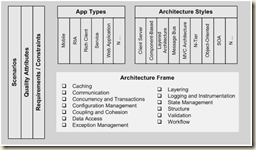Ted Neward blogged about the "Can Dynamic Languages scale" debate going on ServerSide. He discusses the two dimensions of scale that are being debated, namely Size (LOC) and capacity (reqs/sec).
Aside the flamefest that the thread became, I always get the feeling that most arguments are somewhat technically based, but very biased.
I'm not a Dynamic Language Programmer. But as I try to stay current on the evolution of Software Development and Languages, I try to read as much as I can about technology that is being touted as the future, or very promising. Not that I immediatly try to use it in production, as I admit that some corner cases could be tricky (or badly done) because of lack of knowledge or technology imaturity. Beyond that, many hot technologies, while having their merits, are pushed way too much because of the hype (CORBA, XML, EJB, SOAP, anyone?) generated by the BIG (MS, IBM, Sun) companies.
Refactoring
Anyway, one of the arguments countering dynamic languages is the ability to refactor it. Namely that the refactoring isn't fullproof and that there can be mistakes. But guess what, Java/.NET because of Reflection, Dependency Injection can also have these mistakes. I agree that tool support is better in Java/.NET, but that's it.
Conciseness
Another argument, these time by the other camp (dynamic languages) is that dynamic languages are more concise. And comparing the best known instances (Java, C#) to Ruby or Python, one would have to agree. And no, even if the compiler could generate it, it's still code left to maintain and read, that distracts from the code intent.
But even that is changing, as C# 3.0, with type inference, lambdas, automatic properties, extension methods and Linq, removes or simplifies much of this verbosity. So the conciseness argument doesn't depend on being dynamic or static.
Speed
The argument of speed has two meanings: which language/platform executes faster and which language allows the programmer to develop/test faster. The Java/"static" side sits with the faster execution (even though, I still remember when the comparisons to C++ were very bad, this argument was dismissed by the faster programming argument), while the "dynamic" couples to the faster development side.
Even stranger is the bitterness or stuborness of each camp. It's not like the languages/platforms are stagnant. As features are added, and the platforms mature, static languages will get some of the features from the other side (conciseness, interactivity) and dynamic languages will get better tool support and faster platforms. Only by it's evolution will languages stay relevant/dominant. If they don't evolve, they'll lose dominance for the next Big Language (Cobol, C, C++?).
All of this makes sense to me, because as someone said: those that don't learn from history are condmened to repeat it...
Marcas Technorati:
Languages,
Programming

